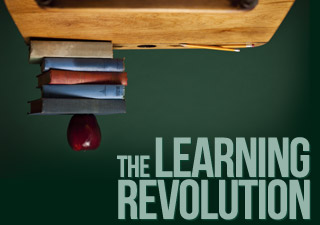Report

The Learning Revolution
Executive Summary
Caela is a 13-year-old girl from Lake Ariel, Pa. Between kindergarten and sixth grade she was hospitalized 16 times from bronchitis, pneumonia, allergies and asthma. In fifth grade, she missed 83 days of school; in sixth, 67. In 2010, Caela enrolled in Pennsylvania Cyber Charter School and completed a full year’s worth of English and science courses in just five months. Moreover, because she was not subjected to the germs and viruses spread by other students, Caela avoided serious illness all year. Caela is one of almost 30,000 students in Pennsylvania being served by cyber schools.
An increasing number of parents are choosing one of the commonwealth’s 12 public cyber charter schools for their children every year. By allowing children to learn online and at home, cyber schools cater to students with a variety of unique needs: those who are either gifted or struggling academically; those who have demanding sports or performing arts schedules; children in rural areas with limited educational opportunities; and those like Caela who suffer from health problems. In the last 10 years, enrollment in public cyber schools has ballooned from 1,848 to 27,779 students.
Despite their popularity among parents and demonstrated academic successes, cyber schools have come under attack from public school boards and some lawmakers. Several pieces of legislation have been introduced in the General Assembly that would limit cyber schools’ independence and drastically reduce funding for students. These proposals respond to claims that cyber schools are “unaccountable” and that they drain money from traditional public school districts.
These charges overlook the fact that cyber schools face the same accountability measures as public schools, including state testing, audits, and site visits. The claims also fail to highlight that cyber schools receive a fraction of what school districts spend. On average, cyber schools spend only three-quarters of what district schools spend per student, about $3,400 less per child. Moreover, cyber school funding represents 1% of all public school spending; school districts spend 10 times this amount on construction and debt alone.
Another growing trend is blended learning, or “hybrid schools.” In contrast to cyber schools, blended learning provides a physical location for learning, while combining online learning and face-to-face class time with a teacher. Blended learning gives students some control over their location, time, direction and pace of study. Across the nation, school districts, charter schools, and private schools are looking to blended learning as a model for delivering quality instruction that meets individual students’ needs.
Online learning serves a significant and growing number of students, and represents a significant shift in how we educate Pennsylvania’s children. In light of the growth of cyber and hybrid schools and the debate over their accountability, this Report seeks to help Pennsylvania residents understand more about cyber charter schools, whom they serve, and how they operate.